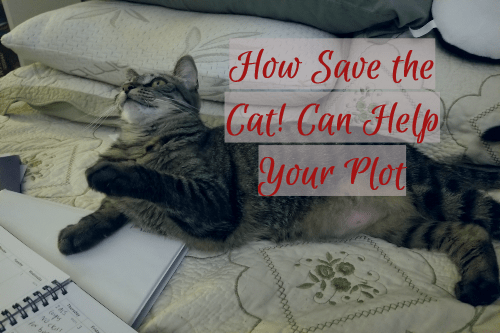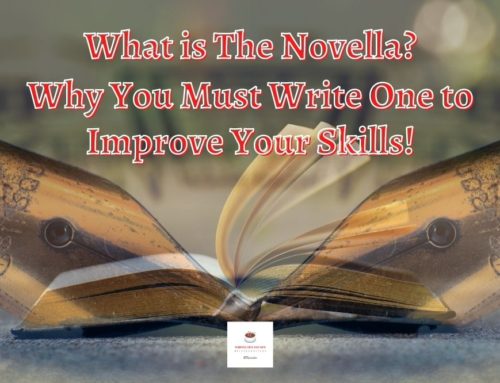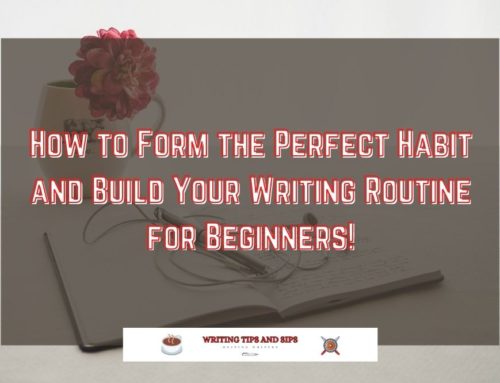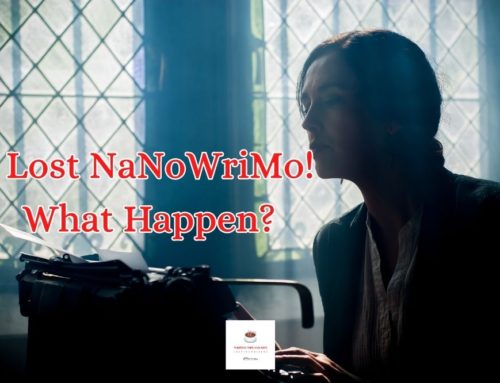Save the Cat! was initially developed by Blake Snyder for screenwriting. Mr. Snyder noticed most stories follow the same structure, they hit specific beats that help viewers connect with the characters, making them as human as possible.
Every story, when broken down, is about transformation. A character overcoming their flaws.
Table of Contents
What is Save the Cat?
Save the Cat! is more than just structure, it’s a road map to a better, tighter, and more engaging narrative. The biggest key to strong storytelling is pacing and Save the Cat! makes that easier. It takes your story and breaks it down into three acts, and even further into fifteen beats.
It is helpful whether you are a plotter or a pantser. For plotters, it allows you to fully outline your novel and know precisely which beats you need to hit for the most engaging story. Pantsers can use Save the Cat! for redrafting. It allows one to see what parts of one’s draft are missing or where things can use a little more to better reach those beats.
The Magic Formula
Pacing makes a good story, but if you want to take your novel to the next level, you need an engaging story. You want your readers to be rooting for your main character every step of the way. How do you do that? Simple. The formula for an engaging story is:
Plot + Structure + Character transformation = engaging story.
Plot is what happens in your novel, structure is when it happens, and character transformation is why everything is happening. The relationship between plot and character is essential, and the character needs to be proactive to prove they are worthy of a novel.
They need to have a problem (flaws), wants (external goals), and a need (an internal goal that will help them fix their problem). Wants and needs are crucial, and I go into further detail here.
Readers love flawed characters, and they will root for them to fix themselves; Save the Cat! is the transformation from flawed to fixed.
As stated earlier, Save the Cat! is three acts broken into fifteen beats; let’s take a closer look.
Act 1

Act one is simply the beginning, it’s the start of your journey and takes place in the first twenty percent of your story. It is the A-story. Its purpose is to show your character’s (or hero’s) status quo life. It highlights all of their flaws and displays them in a place where they need change. Act one is the thesis and is broken into five beats: opening image, theme stated, setup, catalyst, and debate.
Let’s get into it!
1. Opening Image
The opening image is a single-scene beat, generally around a single chapter – usually the opening chapter. It is a quick before snapshot of your character and their world. Its point is to showcase some of your hero’s flaws and tell the reader why they need to change.
The hero doesn’t want to change or know they need to change, however.
This beat sets the tone, style, and mood for your reader, it signals to the reader what kind of story you are telling and introduces them to why they should follow your character.
This beat needs action, something needs to be happening, to show us this character. It is a visual representation of their life.
Maybe you’re writing a story about a character who is working a job they hate and are struggling to live paycheck to paycheck. The opening image would have this character going to their job: bartending – dreading life; they have eviction notices under their door.
The hero is alone, and thinks they’re best this way. They get angry quickly and push anyone away – its an image of what your story is about. The protagonist is resistant to change!
2. Theme Stated
The theme stated is also a single-scene beat, and it comes quickly. Its something that is subtle and is only said in passing. It points out your hero’s need before they even realize they have a need.
The need, in this case, is the theme of your story, it is the transformation your character will go through, and by the end of your novel, your hero will learn this theme. This beat can happen anywhere within the setup and is often said by a secondary character. Your hero will ignore it.
You can be as creative as you want with this beat – it doesn’t have to be a spoken thing, the theme could be on a billboard, in a book the character is reading, an online ad, anything really.
Back to our job hating hero, maybe they are bartending, and someone they serve says, “love is the key to happiness.”
Okay, I admit that is a cheesy theme, and too on the nose, but that is it. The theme stated is that quick. Our bartending hero can easily ignore the theme here, because why would they care what a random guest thinks? They don’t.
3. Setup
The setup is a multiscene beat to introduce the reader to your hero. This beat is the first 10% of your novel and encompasses both the opening image and theme stated.
The setup shows your character’s status quo life, all their flaws are causing them to live life in a specific way, and something is missing. We see what kind of person your hero is, who they truly are, and what goals are driving them. We see their initial wants. Act one is considered your A-story world, and we meet all the characters that are part of that A-story. The A-story is their want.
Our Bartending hero wants a better job. They aren’t making rent, their hours are driving their friends away, and their diet consists of free bar food. Their life isn’t looking great, and most of their human interaction comes from interactions with guests.
The setup shows the reader that the character needs change. If they stay in their A-story world, they are going to die or live an unfulfilling life. Jessica Brody calls this beat, “Stasis = death moment” (Brody 2018). In this moment of the setup, the character themselves realize they need change. If it’s a story worth telling, then change is coming.
4. Catalyst

The catalyst is the push for change that happens to your hero. It is a significant life-changing event that cannot be ignored, often coming in the form of bad news.
This is a single scene beat that generally happens 10% into a novel. It can, however, be the starting point for a novel, and that is a choice that depends on the specific needs of your story.
This is the moment conflict enters the story.
Let’s take a look at our bartender again; They are getting off their shift, going home to a final eviction notice, and the phone rings. They answer to the news that their mother is on her death bed and they need to get across the country, now.
The catalyst does not have to be death, or someone dying, but it does have to be big enough that it cannot be ignored. It has to push your character forward, it has to invite them on their transformative journey.
When coming up with your catalyst, ask yourself if it can be ignored, if the answer is yes, it’s not big enough.
5. Debate
The catalyst is an action beat, so the debate is a multiscene reaction beat. This is the moment when your hero resists change or tries to hold onto the familiar. It is human nature to cling to whatever is comfortable, most people will not jump at change, and your character should be no different. This beat takes place from 10% – 20% of your novel and is dependant on your catalyst.
This section leads to the end of act 1, and it can either be a debate or a preparation. Sometimes the catalyst leaves your character with only one choice, and in this case, they have to prepare to enter the B-story world of act 2.
Our bartender is left with no choice, they have to see their mother, in the debate they are preparing for their departure. Taking time off of work, figuring out how they will leave their town, breaking into whatever savings they may have. At the end of the beat, they are off to act 2.
Act 2
Act 2 is the longest section of your novel and takes up about 60% of your story. It is the opposite of Act 1, and it forces your character to deal with their problems in the wrong way.
Act 1 is considered the A-story, and Act 2 introduces your B-story – pushing your protagonist toward their need. Act 1 is your thesis, and Act 2 is your antithesis. The internal or external world of Act 2 has to be utterly different from Act 1, so different there is no mistake we are now in Act 2.
Act 2 consists of seven beats: Break into 2, B-Story, Fun and Games, Midpoint, Bad guys close in, All is Lost, and The Dark Night of the Soul. We have a lot to cover!
6. Break into 2
The Break into 2 is a single scene beat that introduces the hero into something new: change. It’s the first beat of Act 2 and brings your character to their new internal/external world.
They have gone through the debate, prepared, and are ready to take on the challenge. Not only are they ready, but they also made the choice for themselves. However, whatever they choose, it is a temporary solution.
Our bartender got the call, put their ducks in a row, and now they are setting off on their journey. They arrive in their hometown. They are in their new Act 2 world! Act 1 showed their city life, their struggles, and now they are in a quaint suburb, a small town and only have a room in their childhood home – It’s still an upgrade over their dirty apartment.
7. B-Story

As stated before, your A-story is your character’s wants, and your B-story is your character’s need. By this beat, you should be a quarter into your novel.
The B-story is both a single scene and a multiscene beat;it introduces a character or couple of characters to help guide your hero toward their need. It should be impossible for your protagonist to meet or identify with this character in Act 1. The B-story helper character can be a lover, friend, mentor, or even a nemesis; they just have to guide the hero in some way toward their need.
For example, let’s look back to our bartender, who has just arrived home. Their mother sends them out on an errand to get groceries, and while they are out, they bump into an ex-lover from high school. The two hit it off and agree to meet at a later time.
The lover helper character would be best for our theme, which our hero isn’t even considering at this time. This character should be around for the rest of Act 2 and maybe even the rest of the story.
8. Fun and Games
Your hero has entered the world of Act 2, met their helper character, and now it’s time to give your reader what they are looking for by picking up your book. The fun and games section is also considered the promise of the premise.
Movies use this section to grab footage for trailers, and the novels back blurb comes through here. This is a multiscene beat that begins a quarter into the story, lasting until the midpoint.
This section does not have to be fun for your character, but it will definitely be fun for your reader. At this point, your character should be either shining or fumbling through their new life.
The direction of this beat should be leaning in a mostly uphill or downhill battle, but whichever route you head, there should be little ups and downs anyway.
You are setting up for your midpoint and will have either a false victory or a false defeat. Whether your character is shining or fumbling will determine what your midpoint. It’s important to keep this in mind.
Our bartender is going out on dates with their ex-lover, they are happy. Their mother’s health is improving. Their lover helped them find a job in a field they love. Things are looking good for our bartender. Nothing can bring them down.
9. Midpoint
Up until the midpoint, you have either been rising toward a false victory or fumbling toward a false defeat. The midpoint is a single scene beat that happens directly in the middle of your novel; it pivots the point of your narrative from your A-story toward your B-story.
Your fun and games culminated in this event, and now your A and B stories are going to intersect.
A false victory makes your hero feel like they are winning until their flaws get in the way, and things begin to fall apart. At the midpoint, your hero is winning and on top of the world, but the story is not over yet. Your hero still has much to learn.
A false defeat is the opposite. Your hero has been fumbling and failing their way through the act 2 world, nothing is going their way. They haven’t learned what they need, and until they figure it out, they cannot have the life they want. This midpoint forces them to see their flaws and tackle those head-on.
The midpoint, whichever path you choose, is a raising of stakes. Life is no longer fun and games and change needs to happen.
Our bartender is heading toward a false victory, his life is good, and he got his wants of a new job, a lover, his mother’s health is improving. Nothing seems to be able to bring him down, that is until his mother has an incident sending her back to the hospital.
10. Bad Guys Close In
The Bag Guys Close In is a multiscene beat that is dependant on the midpoint. It’s a place for the hero to either rise or fall. There are not always literal bad guys here, but there are always figurative ones.
The bad guys here are your hero’s flaws.Those flaws are not dealt with, and now they are coming to haunt your hero.
The bad guys close in is the opposite of the fun and games; if things were going well in the fun and games, then things go poorly here and vice versa.
Our bartender’s flaws are kicking in. Their mother is back in the hospital, they get angry and start pulling away from their lover. Maybe they get into a fight with their new boss or stop showing up to work. Things are no longer going well, and its beginning to seem like there was no change at all.
11. All is Lost
The All is Lost beat is essentially a second catalyst but on a much grander scale. It is a single scene beat catapulting your character into rock bottom.
The purpose: to force your protagonist to change the right way. The catalyst put them on their journey, but the All is Lost forces them out of external wants and into internal needs.
There is no turning back!
The hero is tossed into defeat, and there is usually a whiff of death. Maybe a character close to your protagonist dies, perhaps it’s not a literal death, but relationships end. Whatever happens, it has to be the most significant set back your hero has encountered in their whole life, and to make matters worse, it is their own fault.
Our bartender has been pushing people away, they are losing their job, and their lover has left them. They go out to drink away their problems and get a call that their mother has died in the hospital. All is lost and seems hopeless for our bartender, life can’t possibly get any worse until they get in a crash driving drunk and wind up in the hospital themselves.
12. Dark Night of the Soul

The dark night of the soul is a multiscene reaction beat to the all is lost. It is essentially a second debate revolving around the question: what now?
The reaction is dependant on your protagonist; some hero’s wallow, some go on rampages, and some isolate. But, no matter how they react, it should lead them to the dark night epiphany: a moment where they realize how it is all their fault, and what they really needed was with them all long.
It is their internal need.
Hero’s often return to their Act 1 world, they seek out something familiar but come to find it isn’t familiar at all. Change has been happening throughout the novel, and they aren’t the same person from the opening image anymore.
Our bartender recovers from their accident and returns to their big-city environment. They were decent at their job and find it easy to return to bartending, but something is missing. The hero misses their lover, and they remember love is the key to happiness, but it’s deeper than that; they need to love themselves.
Act 3
The third act is the culmination and blending of all things in your story.Act 1 was the thesis, Act 2, the antithesis, and Act 3 is the synthesis. Your protagonist is now aware of their need; they implement the change and come out a better person for all they been through.
This section only has three beats and ends your story. The beats are: Break into 3, Finale, and Final image. What are we waiting for? Let’s finish your story!
13. Break into 3
The Break into 3 is a single scene beat that brings your hero into the final act. They suffered through the all is lost, had their dark night epiphany, and now they are ready to fully make the change. This scene is a breakthrough where they finally learn how to fix themselves.
Our bartender is serving drinks when they feel something in their heart. They need to go back to their hometown. That is their home. They are going to get their job and win back their lover. They quit bartending, because that isn’t what makes them happy, and leave.
14. Finale
This is what your entire narrative has been building up to. Your character showed their flawed self in Act 1, they stumbled or shined their way through the fun and games, survived the all is lost, and now they are ready to achieve their need.
The Finale is a multiscene beat that resolves all the problems left. This beat has a mini three-act structure of its own.
The first act of the Finale mends broken relationships and prepares our hero to face their flaws head-on. They are succeeding, and everything seems to be going well, they are fully equipped now.
But, entering the second act of the Finale, there is a twist, the bad guys or flaws fight back and test your hero. The protagonist needs to earn their transformation. Often B characters make a sacrifice here, allowing the hero to go on alone.
The final act, the hero, knows they have what it takes, overcomes all odds and wins! They find their need, and all is right with the world!
Our bartender arrives in their hometown, they march through the doors of their new job and get it back. With the help of their boss, they arrange for them to meet with their ex-lover. They finally meet and apologize, but the lover is unsure. They don’t want to get hurt, not again. Our bartender loves themselves now and proves to the lover they changed. They get together, and our bartender feels complete.
15. Final Image

Your narrative is just about over, your hero has won the day. The final image is a single scene beat that is the opposite of the opening image. This beat is an after image showing the transformation of your hero. The opening image showed their flawed life, and the final image shows an improved life.
Our bartender is living in a clean house with their lover, they are happy, their mortgage is up to date, and they love their life. After everything they’ve been through, they are finally free of their unhappy lifestyle.
Conclusion
There you have it. The three acts and fifteen beats of Save the Cat! You have put your character through a transformation machine, and they come out better for it.
Like most guidelines, you do not have to follow the order of Save the Cat! And can take creative liberties with it. Some writers start with the catalyst before they even have an opening image. Maybe you will have your midpoint come sooner or later.
At the end of the day, it depends on the needs of your manuscript. Use this as a tool to help you tone your story into the engaging narrative you know it can be!
References
Brody, Jessica. Save the Cat! Writes a Novel: The Last Book on Novel Writing You’ll Ever Need. New York: Ten Speed Press, 2018.
C. D. Baron
Latest posts by C. D. Baron (see all)
- What is The Novella? Why You Must Write One to Improve Your Skills! - 03/21/2021
- Wake Up! A Short Story (Work in Progress) - 02/07/2021
- My Top 5 Favorite Reads of All Time (So Far) - 01/24/2021





